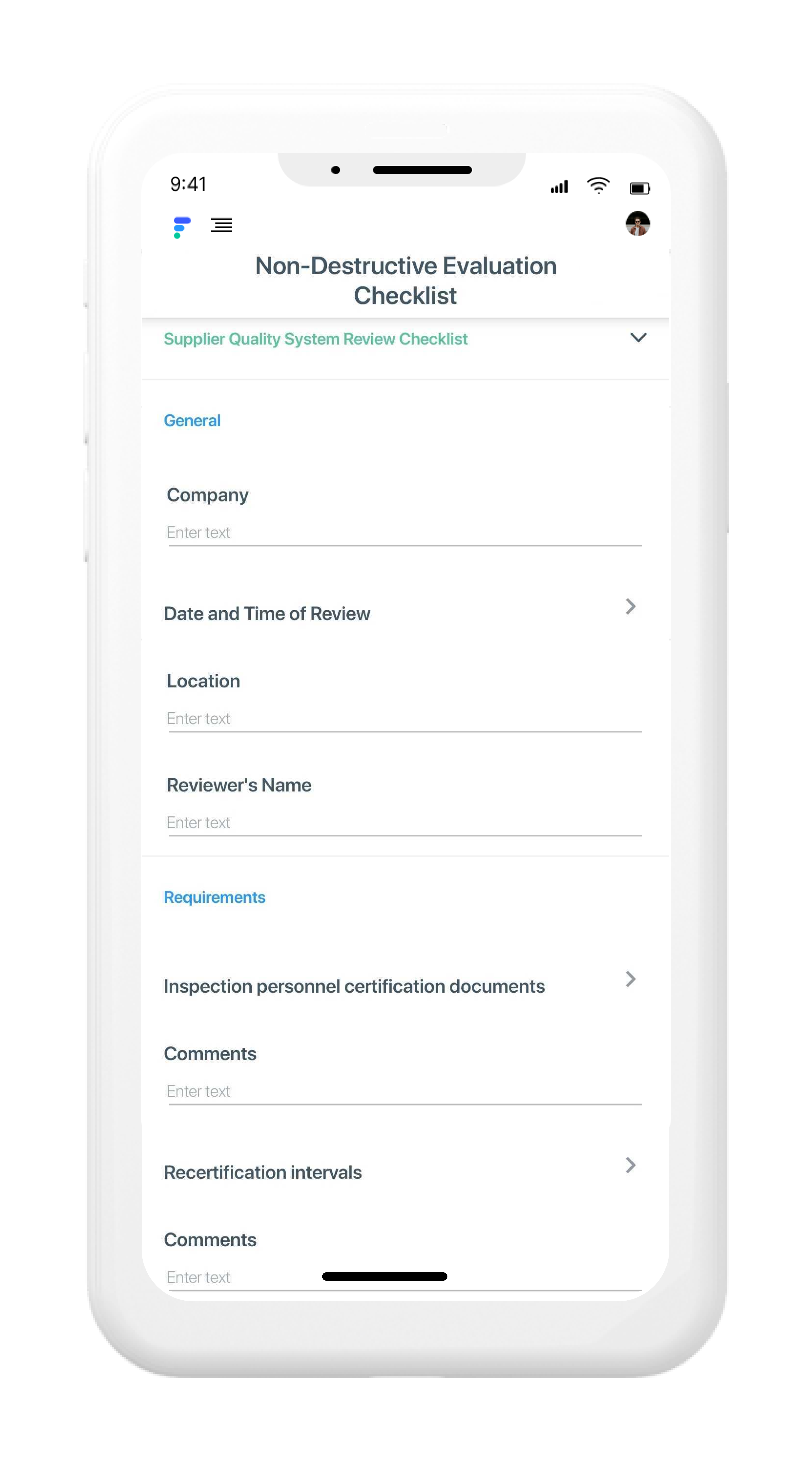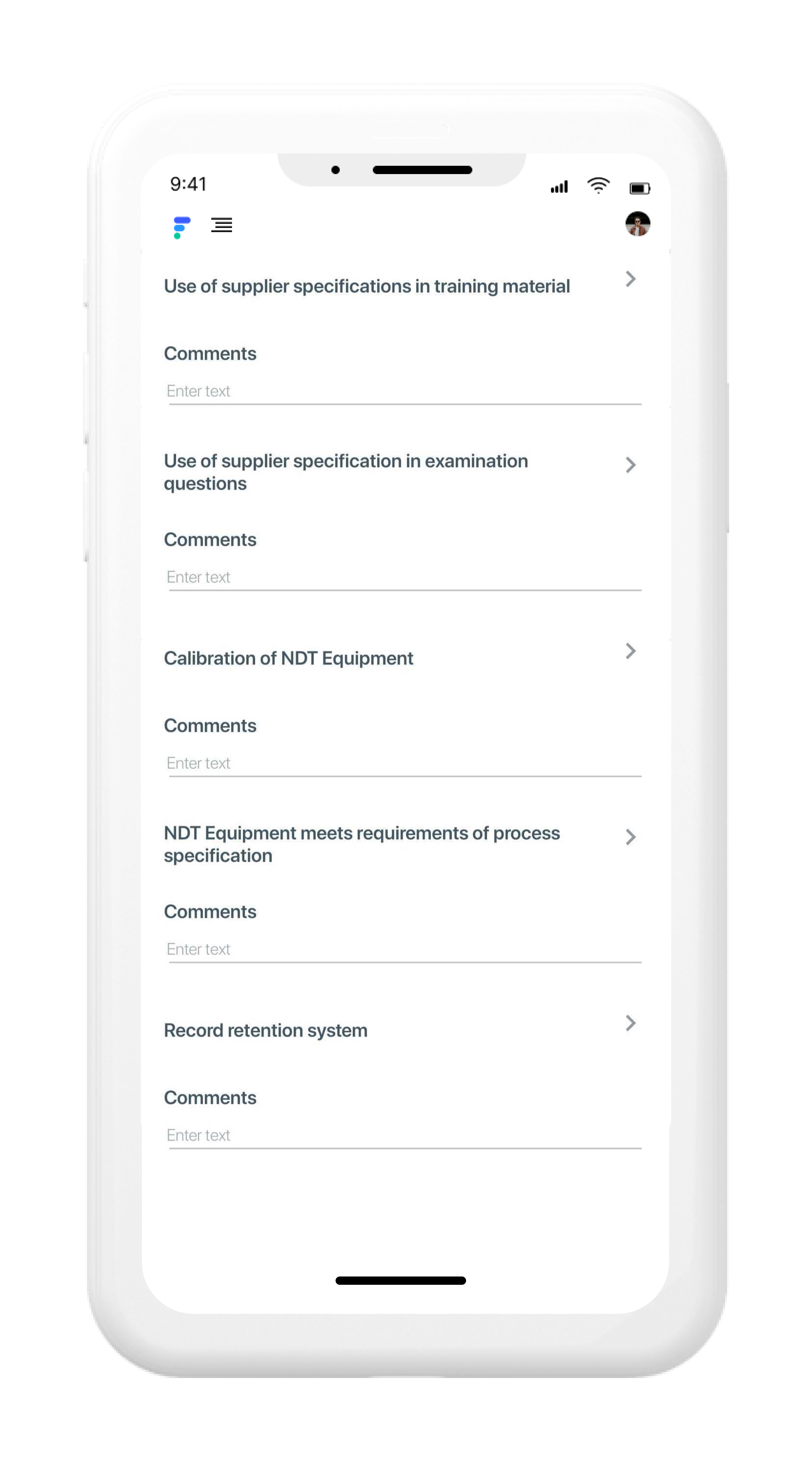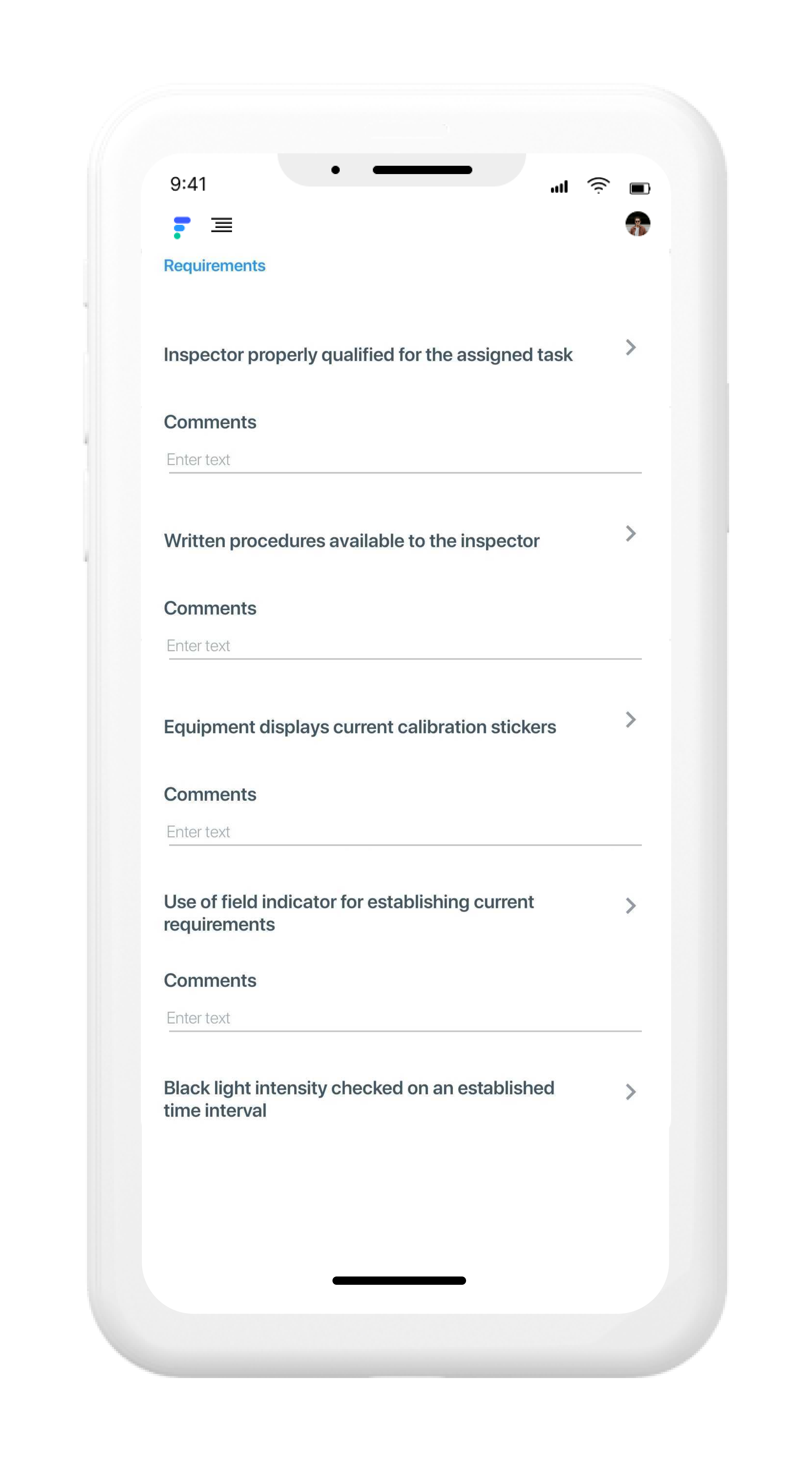Non-Destructive Testing (NDT) is a non-invasive method of testing pipeline infrastructure to check the properties of the pipeline without disrupting operations. A Non-Destructive Testing Checklist can help identify potential risks and damage in the pipeline which are not visible to the naked eye. These regular inspections are needed to ensure that pipelines are in optimum working condition, and they pose no risk to safety or productivity.
Let’s look at some of the essential elements in Non-Destructive Testing
- What does Non-Destructive Testing Checklist involve, and what types of tests are conducted?
- Why are these Non-Destructive Testing procedures crucial for pipeline owners?
- How can inspectors conduct Non-Destructive Testing more efficiently with Fielda?
Non-Destructive Testing involves: Inspectors conduct various tests; Corrosion Under Insulation (CUI) to check defects not visible on the surface, Positive Material Identification (PMI) to test material strength, etc. They conduct these along with several other tests using various methods such as guided wave technology, which uses ultrasound for imaging, X-rays, Computer Radiography, and Digital Radiography for imaging and checking metal thickness. They also conduct Laser Profilometry tests to map the surface of the pipelines. They may also include electromagnetic tests like Magnetic Flux Leakage tests to check pit, grooving, leaks, and cracks.
Why are Non-Destructive Testing Procedures crucial: Inspections and tests for oil and gas pipelines need to be conducted regularly and meticulously. They form a vital part of compliance and must be conducted according to stringent industry standards, recommended practices, and codes outlined by bodies such as The American Society for Nondestructive Testing (ASNT), American Petroleum Institute (API), etc. Damage to pipelines can occur from corrosion, wear and tear, stress within the system, or external factors. These can cause a loss in productivity if not identified and rectified soon. Once issues escalate, the cost of resolution also increases substantially.
How can inspectors conduct Non-Destructive Testing more efficiently: Non-Destructive Testing Checklist involves gathering data using scientifically different methods. These methods follow rigorous industry standards. And findings must be logged systematically for other teams to make sense of the test data and execute remediation and repairs as needed. Fielda helps inspectors create forms with the required flexibility of format, data fields, and supporting evidence files. Fielda enables offline data capture on their mobile device in distant locations without connectivity. As a result, information can be instantly consolidated in standardized report formats for sharing with clients, and service requests can be raised promptly.
Pre-empt: Identify potential risks and pipeline damage to ensure minimum downtime and lower maintenance costs.
Optimize: Manage Non-Destructive Testing more efficiently and reduce labor-intensive work significantly.
Consolidate: Leverage consolidated data, analytics, and insights for better client engagement and improved operational decisions.
About Fielda: Fielda helps companies manage and maintain their assets and gain real-time oversight of all tasks, workflows, and projects to improve operational efficiency, enhance team productivity and impact the bottom line. Whether it’s installations, inspections, repairs, replacement of parts, servicing and maintenance, or routine audits, with Fielda’s mobile data collection, GIS-enabled technology, automated and custom workflows, and analytics, you can eliminate errors, enhance response time, ease workflow bottlenecks, and simplify your field operations.


